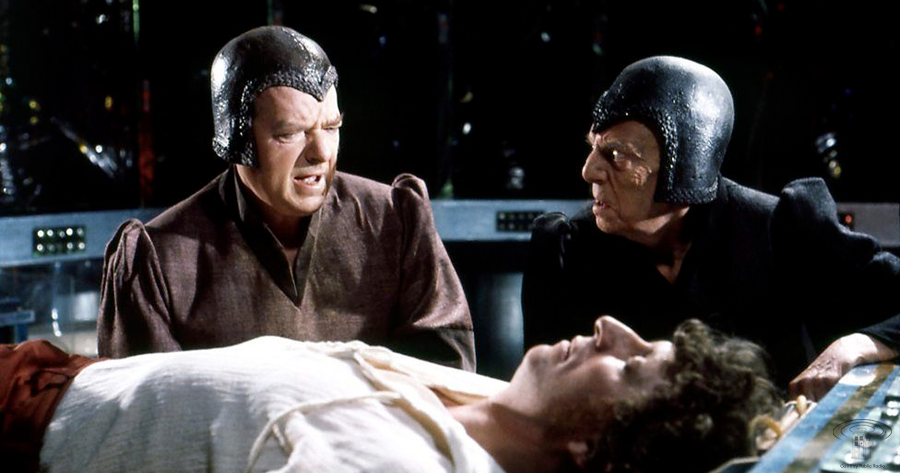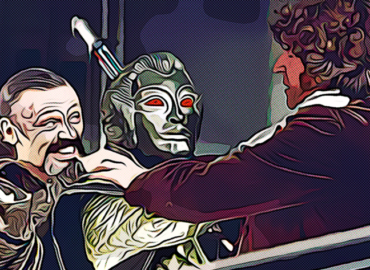We rely an awful lot on continuity and canon in this program’s fandom. Where did this get established, what are the rules and limitations of that, who did what and when (or in many cases, which iteration of “when”). It can be a lot to keep up with, and even more to argue over. Imagine how difficult it must be for modern Who writers, having to navigate a boundless minefield of established fact, pseudo-fact, history, pseudo-history, technology, pseudo…oh, you get the idea. But it all has to start somewhere, right?
Herein lies one of those pivotal points of origin, a story where so much of what we today accept — or at least, acknowledge — as the basis for Whovian lore. Regeneration limits, the Houses of Gallifrey, the Eye of Harmony, and the seemingly endless wardrobe of Rassilon, and on and on. One has to wonder if Robert Holmes had any idea what he was doing for (and to) future writers and viewers when he put this one together.
Back to Gallifrey without a companion, we watch the Fourth Doctor deal with his Time Lord kin in ways he couldn’t have anticipated…even if he *is* Prydonian. We all lament the complete lack of a single female actor in the story, but resoundingly appreciate the invaluable additions to a fuller understanding of Time Lord culture. (Or at least bureaucracy.)
NEWS:



